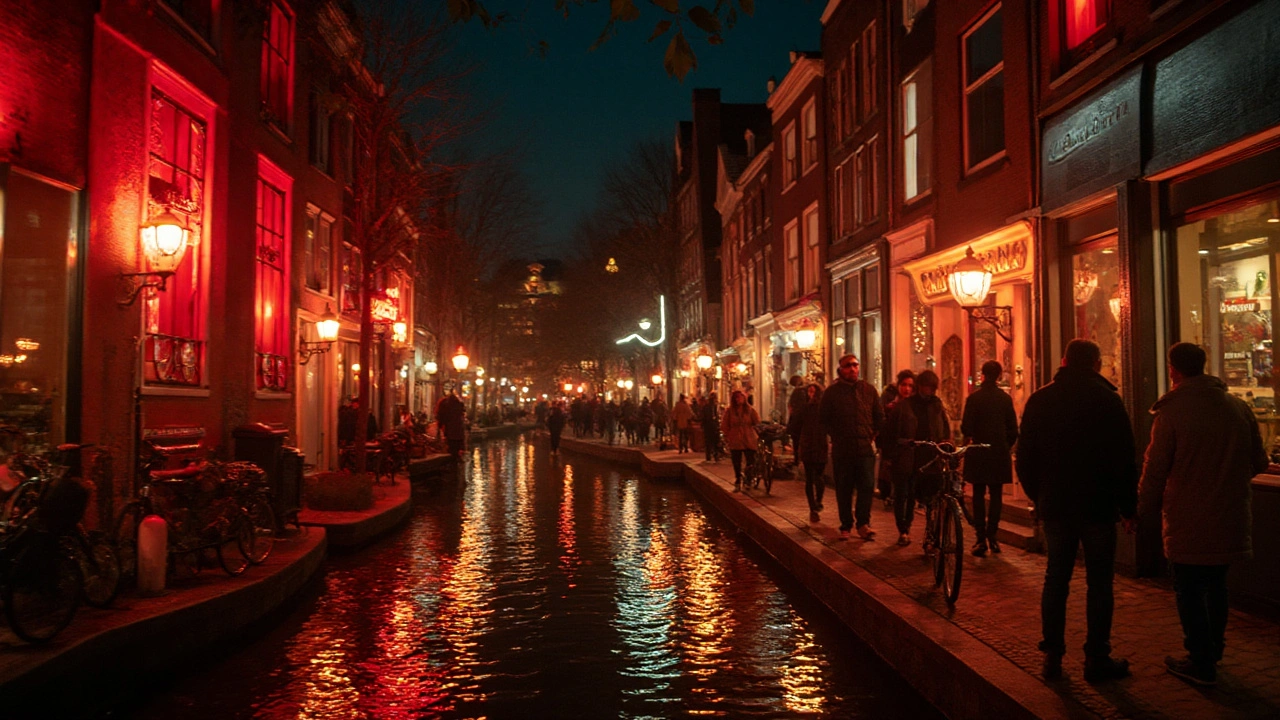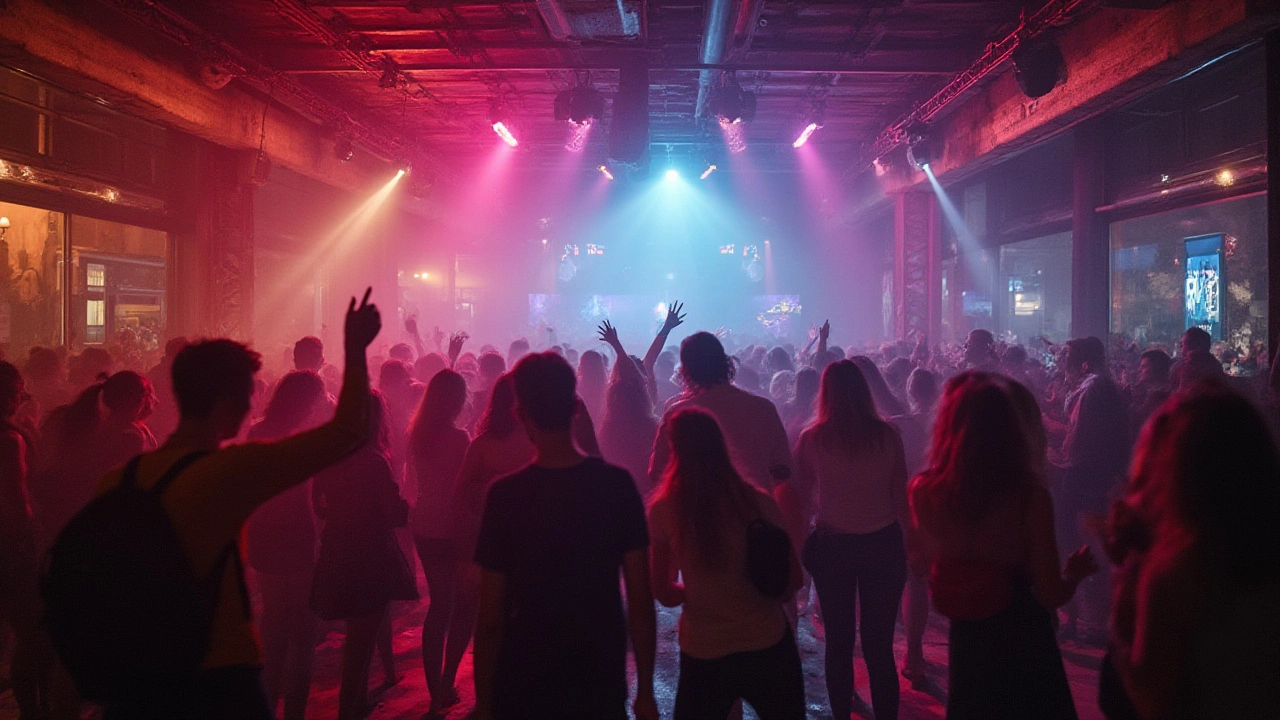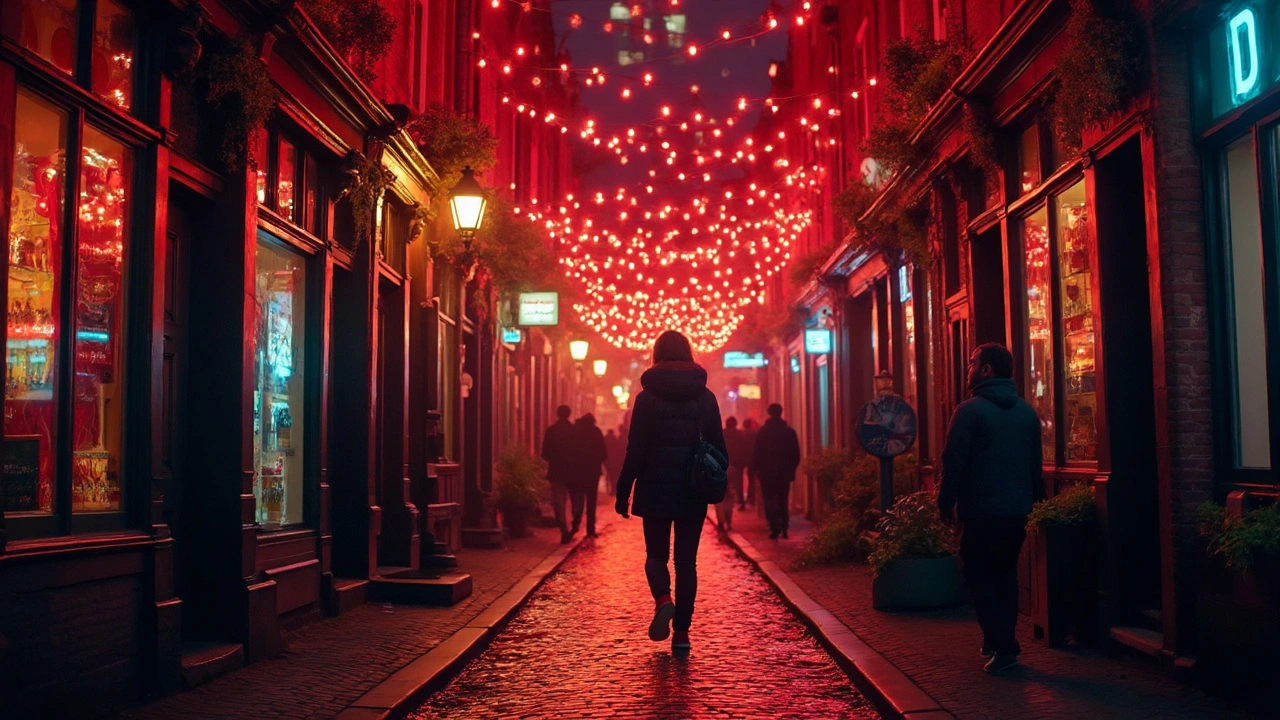
For someone who’s only seen Amsterdam’s Red Light District through a tourist’s eyes, the reality behind those glowing windows stings with surprises. It’s easy to walk past the glass-front rooms and hear the nearby canal splash, never really thinking about the women—some younger than my oldest, Caden, others with families back home. But they’re not just silhouettes under neon lights; they’re storytellers, strivers, parents, workers, and—most unexpected for outsiders—sources of hard-won, practical wisdom about life, work, and what it means to find your own way in a city built on both tradition and taboos.
The Faces Behind the Red Lights: Real Women, Real Stories
Start chatting with call girls in Amsterdam—whether in a smoke-filled hostel café, on a bench by the Prinsengracht, or over a stiff coffee at a tiny brown bar—and you'll hear a different city than the one from the guided tours. Like Maya, who arrived at twenty-three from Romania aiming to save for her fashion design degree, with just her mother’s advice and one small suitcase. Or Noor, a Dutch single mom juggling school runs for her seven-year-old with evening shifts behind the famous glass. You picture the city as vast and impersonal; in reality, the network among the women is tight-knit, full of coded signals, shared warnings, and borrowed lipsticks. A Belgian woman named Sylvie told me how quickly she learned to spot trouble: a sleazy client will never look you in the eye. But also, how she found real allies—not just other workers, but sympathetic shopkeepers and even loyal regulars, who greet her with coffees or pastries.
What genuinely stands out in their stories is not just grit or struggle, but a strange sense of control and community. Despite all the stereotypes, many women see the job as a legitimate way to provide for kids, support parents, or carve out their independence. Agencies are common, but independent work is rising because the legal structures in Amsterdam offer a level of autonomy rare elsewhere. Working legally, with tax IDs and regular health checks (which the city strictly enforces—an average of four checks per girl each year, according to a 2024 survey), gives many a sense of legitimacy that’s rare in other countries—even within Europe.
Here’s an interesting bit: a study published by the University of Amsterdam in 2023 found that 83% of call girls interviewed valued the ability to set their own boundaries, decide who to accept or reject, and take time off when needed. This autonomy—and the ability to say no—is what makes Amsterdam unique compared to places where sex work lurks in shadows and fears. Still, beneath these positives, plenty of call girls talk candidly about burnout, emotional fatigue, and occasional loneliness, especially those working solo. They swap tips on self-care—everything from meditation apps to which local therapist is least judgmental if things get rough.
The reality, according to Emelia, an Irish-Dutch call girl who started just after the pandemic when student debt mounted, is that no one expects to stay forever. Most see the job as a phase—save some money, study, move on—but some, attracted by decent pay (on average, legal call girls in Amsterdam can earn anywhere from €80–€150 per hour, depending on experience and client types), end up making a career. Emelia’s big regret? Not learning Dutch sooner. “You get better bookings, you can talk your way out of strange situations, and it gets way less lonely if you actually feel like Amsterdam is your home.”
Daily Life in Amsterdam’s Legal Sex Work Scene
Once you step inside the day-to-day, the scenes sound almost normal—surprisingly so. Many call girls in Amsterdam run on routines tighter than many desk jobs. Wake up, hit the market for groceries, check texts from repeat clients, and prep for an 8-hour shift behind the window. Non-peak hours (late morning/early afternoon) are quieter—often filled with reading, Netflix on a phone, or chatting with fellow workers between bookings. Mornings are also reserved for health check appointments at the GGD, Amsterdam’s public health office, which monitors STIs and provides free tests. One practical tip shared among workers: Always make an extra kit of wipes, mints, and a portable charger—and stash a set of flats, because spending all day in stilettos is a rookie mistake.
Call girls organize around seasons and local festivities. King’s Day in April? Crazy surge in tourists, extra security on the streets, and sometimes higher hourly rates. A wet February night? Quieter streets mean relying on regulars and a WhatsApp buzz away from your gig. Safety comes first, and while the police presence might seem intimidating for tourists, most sex workers I spoke with said it’s reassuring: undercover units and client registration have made attacks or scams much less common since 2021. That said, the old rule is still gospel: Never let your guard down and always trust your gut over the promise of quick cash.
Technology has changed the routine a lot, especially since COVID. With app-based bookings, digital profiles, and even online reviews (yes, on Dutch analogs of Yelp), most call girls make careful choices about whom they let in. Some prefer the anonymity of agency-managed appointments, while others thrive solo by building up a regular base and saying no to walk-ins. The Dutch sex worker union, PROUD, even runs workshops on how to manage your digital reputation and spot fake clients online, which keeps everyone a little safer, especially newer girls.
But there are still real-life issues: landlords hiking up rents on known sex worker apartments, bureaucratic hurdles for non-EU girls renewing work documents, and—probably most frustrating—occasional harassment from tourists treating workers like live museum exhibits. There’s a fine line between legal work and dignity. Many women keep a short, sharp script ready for intrusive questions, and—believe it or not—a little sarcasm helps weed out creeps faster than security sometimes can.

Navigating Challenges: Legal Realities, Social Stigma, and Staying Safe
Even with some of the world’s most liberal sex work laws, Amsterdam’s call girls don’t always have it easy. Sure, the city’s legal system is protective—there are official brothel licenses, requirements for written contracts, and inspections nearly every few months (as seen from the 2024 Amsterdam City Council report). Still, bureaucracy often means jumping through hoops, especially for non-EU workers: getting a visa, opening bank accounts, or signing legal leases can spiral into paperwork nightmares, which eats up time every month. Noor told me, “You’ve gotta keep a folder of every paper. If you miss one, you lose a week of work.”
Then comes the stickier issue—social stigma. Even though sex work is legal, plenty of Amsterdam locals, especially older generations, still give call girls the side-eye if their job comes up. School drop-offs can get awkward. One friend, Sarah, switched daycares three times just to dodge gossip. Online communities, like secret Facebook groups or encrypted WhatsApp chats, offer some support, but many still keep the details of their work hidden even from close friends. This split life—a public version and a private one—can wear down even the strongest over time.
Safety, though, always remains the top priority. These days, workers are well-versed in protection plans: code words for emergencies, security cameras, and neighborhood WhatsApp groups that alert everyone if an aggressive client shows up. Amsterdam police share monthly safety tips; there’s even a joint info session every June where police, medical teams, and workers talk through trouble spots. Something most outsiders don’t realize: workers are quick to blacklist dangerous clients, and these names zip through the community faster than any official police alert. Emelia laughed, “Bad clients show up on the blocklist faster than you can say ‘midweek special.’”
Beyond physical safety, there’s emotional self-defense. Burnout is real in a job that mixes intimacy, risk, and constant judgment. Most experienced call girls recommend setting solid work-life boundaries. One Dutch therapist who’s specialized in working with sex workers says her clients thrive when they set hard limits on their hours and pursue hobbies outside the job—gardening, painting, even dog-walking groups in Vondelpark. For rookies, the number one rule is easy: never let your guard down, and learn when to walk away.
| City | Average Hourly Earnings (€) | Legal Status |
|---|---|---|
| Amsterdam | 100 | Fully Legal & Regulated |
| Berlin | 70 | Legal but Less Regulation |
| London | 55 | Partial Legality |
| Paris | 35 | Illegal except certain conditions |
Another practical lesson: learn Dutch, keep your tax records sorted, and network like your rent depends on it. Even veteran call girls stress that if you want to make a real living—and not get tripped up by surprise inspections or jealous competitors—you’ve got to stay on top of local rules, the city’s constant policy tweaks, and your own public health. And get this—while 2024 saw a small dip in bookings thanks to some new tourist taxes, property prices for flats near the Red Light District held steady, because the demand from call girls is so steady. Turns out, some jobs never go out of fashion here.
Advice, Insights, and What the Future Holds
If there’s one thing that cuts through every conversation, it’s that working as a call girl in Amsterdam is nothing like most people outside the business imagine. Some are students, some are single moms like Noor, and some are saving up to open a bakery or go back to university. You hear the same blend of realism and pride—yes, it’s hard; yes, it pays the bills; yes, it’s a job like any other, but with unique freedoms and unique risks. For newcomers, the best advice is both blunt and kind: connect with local support groups, get educated about your rights, and always listen to your gut about a client. Avoid flashy promises—if something feels too good, it probably is.
Tech is only going to keep changing the scene. Digital bookings, VPN-protected communication, and strict client screening mean more control for call girls than ever. But Emelia pointed out how important it is to use apps carefully—privacy breaches can lead to stalkers, and it pays to stick with trusted booking platforms like RedLights.app or EscortBook NL. Another tip from Maya: always have a backup plan, a small emergency fund, and a friend on speed-dial—connected through Whatsapp, not regular texts, for a little extra privacy.
- Join the union (PROUD is open to all legal workers)
- Set work-life boundaries from day one (avoid the temptation to work marathon weeks—it leads to burnout fast)
- Keep business banking and personal life separate (ask your bank for advice; ABN AMRO has a dedicated desk for sex workers now)
- Find a local therapist with experience in sex work issues (there’s now a city-funded database of vetted therapists and coaches)
- Stay educated about all legal changes—attend city meetings or community workshops when possible
The Red Light District itself is changing slowly. The city government, feeling the heat from both local residents and international visitors, keeps looking at moving sex work partly outside the old center—a plan debated since 2020 but every year delayed. Many women say they’d rather stay central—it means more visibility, more safety, and access to friends nearby. But change is coming, and every call girl I spoke to is planning for it—updating their business cards, checking out apartments further west, and keeping their legal paperwork squeaky clean.
As a dad, I can’t help thinking about what kind of world Caden and Emelia will inherit—one where working women are respected, safe, and supported, or one still tangled up in double standards. The call girls I’ve met in Amsterdam are nothing like the stereotypes—tough, practical, and full of good stories. Maybe the city’s famous for its red-lit windows. But behind every window, there’s a real person looking out, making choices, writing the next chapter of her life in neon and daylight alike.





